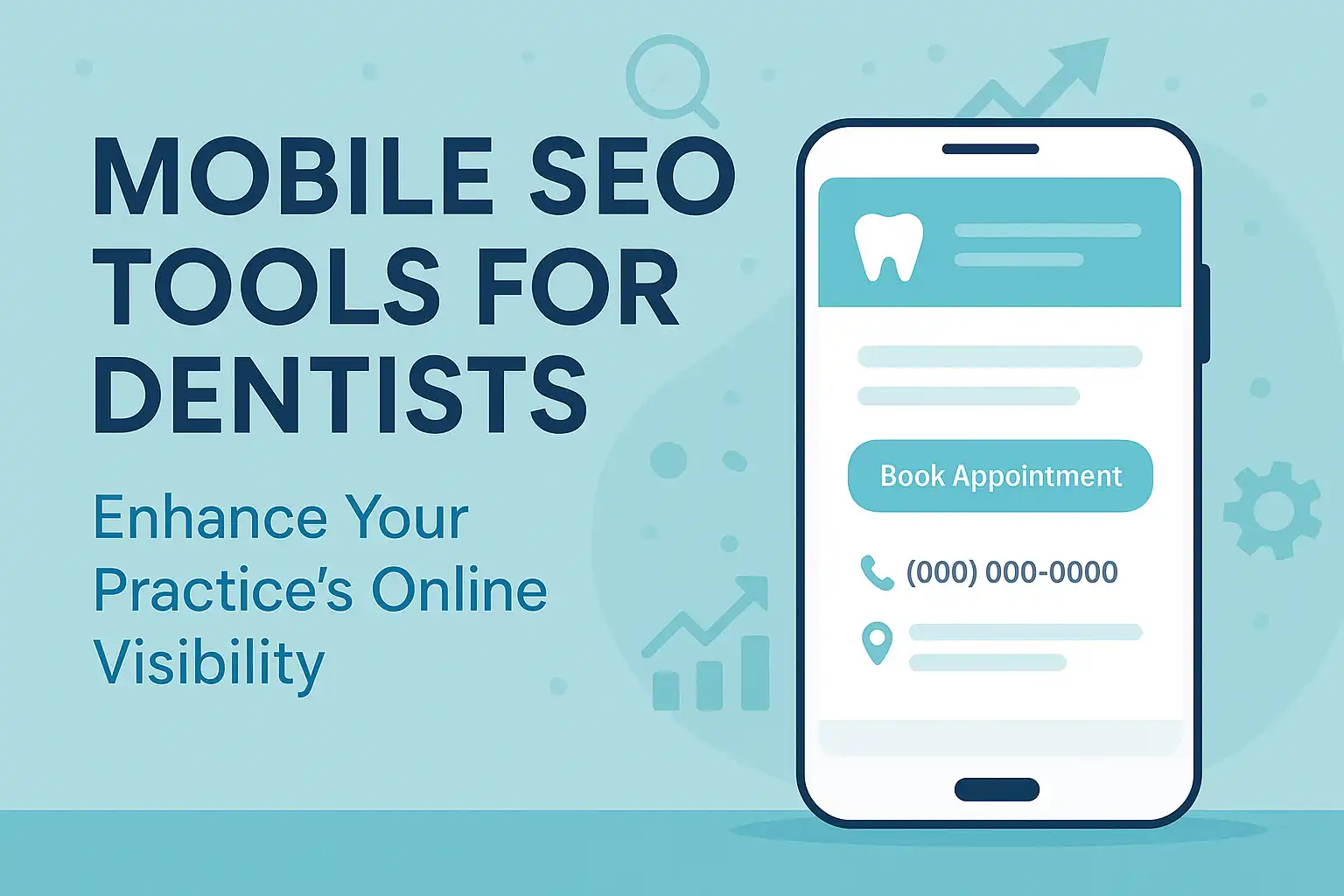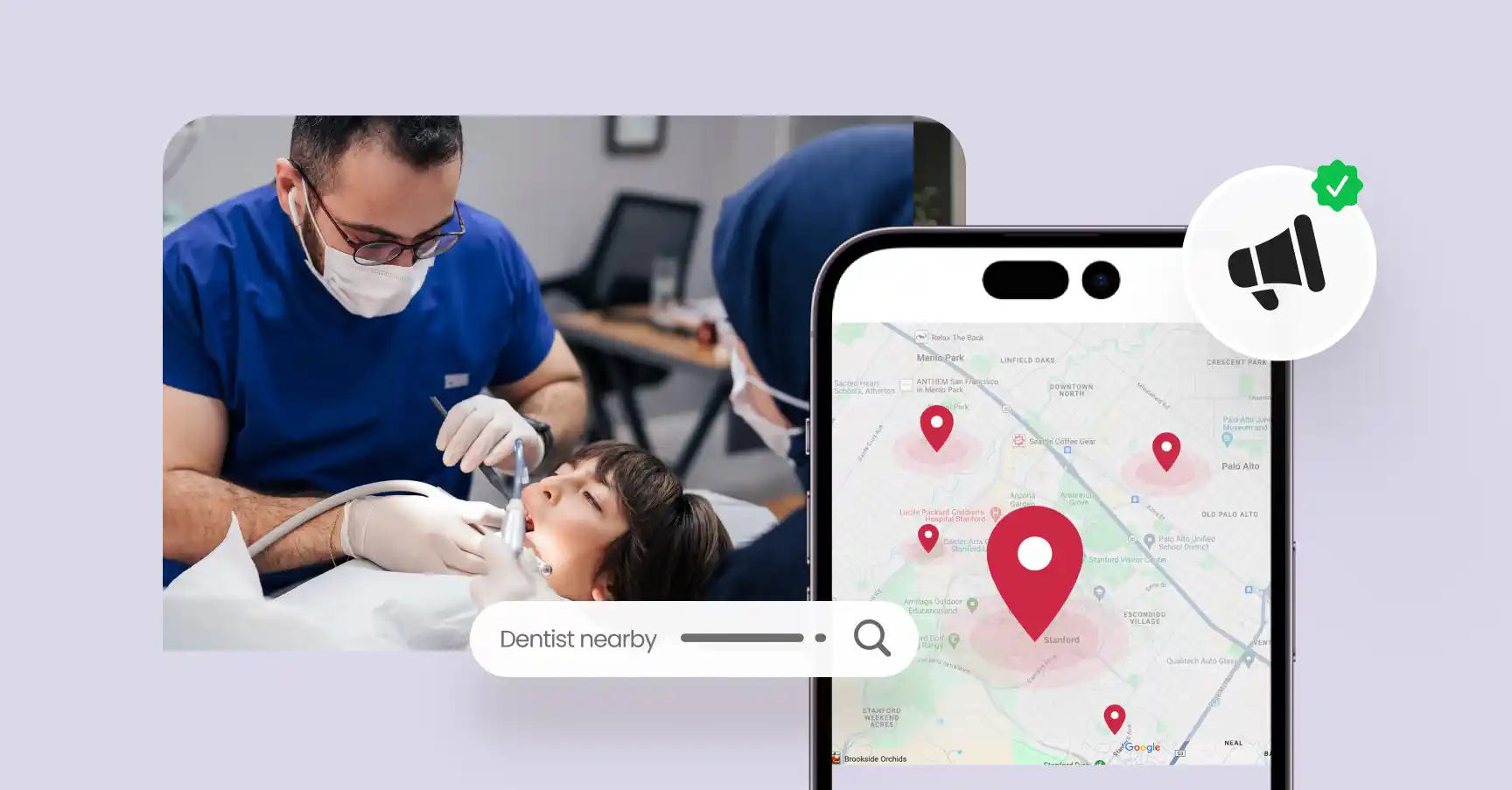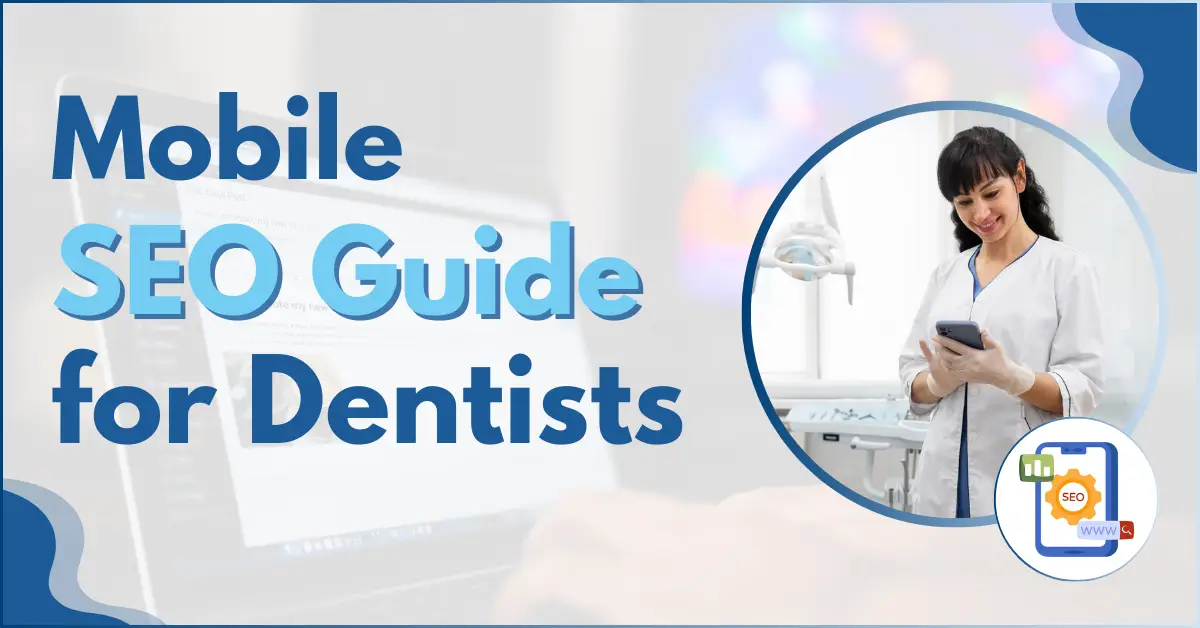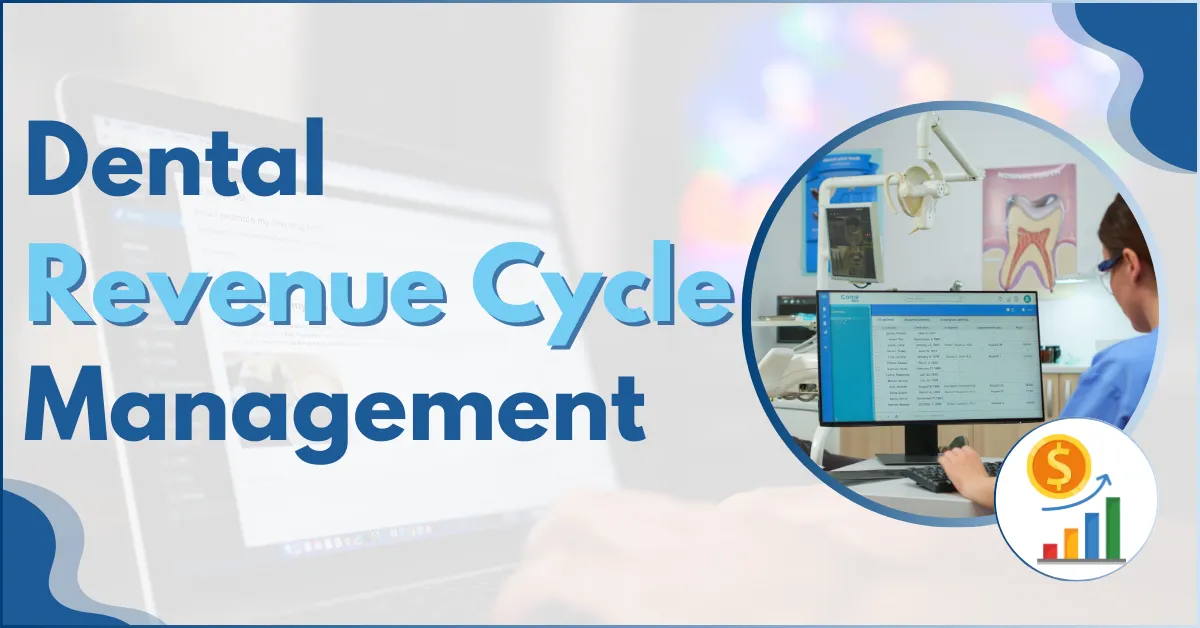Alright, let’s talk about getting your dental practice found online by people using their phones. You’re busy looking after teeth, so I will keep this straightforward and useful, no long talk.
This is a mobile SEO guide, which simply means making sure your website looks good and works well on phones. As per Statista, globally, more than half (58.67%) of all the visits to websites happen on mobile phones.
So it is important to make sure that Google shows your dental website to people searching for dentists on their mobiles.
Simple Mobile SEO Guide for Dentists for Getting Found Online
Here’s the lowdown on how to make sure potential patients find you when they’re searching on their phones.
10 Mobile Optimization Best Practices for Dentists
Here are some actionable things you can do: Do these, and in this order:
1. Make your site fast on mobile.
2. Use large, tap-friendly buttons.
3. Make your contact info clickable.
4. Place your CTA above the fold.
5. Write for people on the go.
6. Optimize your meta titles and descriptions.
7. Use structured data (aka schema).

8. Avoid popups that block the screen.
9. Match your desktop and mobile content.
10. Track your rankings on mobile.
These are some key mobile seo best practices to keep in mind.
Not all dental websites are created equal, especially on mobile.
Even with the best intentions, many practices unknowingly miss key optimization steps that hurt mobile usability. Get a detailed mobile SEO audit from us to analyze what’s holding your site back and how to fix it fast.

Mobile SEO Configuration Options
Don’t worry too much about the technical names here. The best way to handle this is usually the first one:
Preferred Setup: Responsive Design (Recommended)
This means your website automatically adjusts to fit whatever screen it’s being viewed on – phone, tablet, or computer. It’s like having one website that’s smart enough to resize itself. This is generally the easiest and best approach for seo mobile.
Alternate Setups (Generally not recommended for most dentists)
When It Comes to Mobile, You’ve Got 3 Options:
Stick with responsive design. It’s the simplest and most effective for a good mobile site.
| Option | Pros | Cons | Recommendation |
| Responsive Design | One site for all screens. Google’s favorite. | None. | ✅ Best choice |
| Dynamic Serving | Loads different code for mobile vs desktop. | Hard to manage, risk of errors. | ❌ Too complicated |
| Separate URLs (e.g., m.yoursite.com) | Used to be popular. | Old-school, duplicates content, hurts SEO. | ❌ Avoid |
How to Make Your Dental Site Easy to Use on a Phone (UX for Mobiles)
UX stands for User Experience. It’s all about making your dental website design easy and enjoyable for people to use on their phones.
Mobile User Experience Principles
Content Design Tips for Mobile SEO for Dentists
Mobile UX Hacks (Simple Tips)
How to Do Mobile Content Optimization?
Content optimization is not just about how your website looks; the content itself needs to be mobile-friendly.
Creating Mobile-Friendly Content
Write clearly and concisely. Get straight to the point.
Optimize Titles and Meta Descriptions
These are the short snippets of text that appear in Google search results. Make them compelling and include relevant keywords so people will want to click. Keep them short enough to display properly on mobile screens.
Use HTML5 for Video
If you have videos on your site (like a virtual tour of your office), use HTML5 so they play smoothly on all devices.
Use Schema Structured Data
This is a bit technical, but it’s like adding extra information to your website’s code that helps Google understand what your content is about (e.g., your address, phone number, hours). This can help you show up better in local searches.
Mobile Keyword Research
Think about keywords that dental patients are actually searching for on their phones when they need a dentist. It might be more specific and local (e.g., “emergency dentist near me open now”).
Voice Search Optimization
People using voice search tend to use longer, more natural-sounding phrases. Think about how someone would ask for a dentist using their voice.
How to Do Technical SEO for Mobile?
Dental technical SEO for mobile sounds scary, but I will keep it simple. It’s about making sure the behind-the-scenes stuff on your website is set up correctly for mobile.
Mobile Site Speed
We mentioned this before, but it’s crucial. Use tools like Google PageSpeed Insights to see how fast your site loads on mobile and get suggestions for improvement.
Viewport Content Tag
This is a piece of code that tells browsers how to size your website on different screens. Your web developer should make sure this is set up correctly.
Structured Data Implementation
We touched on this earlier. It helps Google understand your content better.
Using “Fetch as Google” for Mobile (in Google Search Console)
This tool lets you see how Googlebot (Google’s web crawler) sees your mobile site. It can help you identify any issues.
Allowing Googlebot Access
Make sure Googlebot isn’t blocked from accessing important parts of your website’s code (like CSS and JavaScript), as this can affect how your site is displayed and understood on mobile.
Avoiding Interstitials
These are the full-screen ads that pop up and can be annoying on mobile. Google penalizes sites that use intrusive interstitials.
Mobile Usability Testing
Actually, use your website on different phones yourself. See if anything is difficult to click, read, or navigate.
Easy to Use Mobile SEO Tools to Monitor & Improve Ranking
| Tool | Purpose | How It Helps Dental Websites |
| Google Mobile Friendly Test | This Google SEO tool checks if your site is mobile-friendly | Quick check to see if your dental site meets Google’s mobile standards. |
| Google Lighthouse | In-depth performance audit (mobile/desktop) | Provides scores for performance, accessibility, and SEO; useful for fixing mobile-specific issues. |
| SEMrush (or similar SEO tools) | Mobile SEO tracking, keyword ranking, competitor analysis | Helps you find opportunities to outrank local dental competitors in mobile search. |
| Keyword Position Tracking | Monitor keyword rankings on mobile vs. desktop | Ensures your practice appears for important terms like “dentist near me” on mobile searches. |
| Google Analytics | Compare mobile vs. desktop performance | Tracks user behavior like bounce rate and time on page by device type, best for patient retention. |
| Competitor Mobile SEO Analysis | Analyze what competitors do well on mobile | Helps identify successful features (e.g., faster loading, mobile appointment booking) to improve your site. |

Tracking performance is one thing – understanding it is another.
These tools provide powerful data, but it can be hard to know what to focus on when you’re busy running a practice. Let us analyze your mobile metrics and provide actionable insights so you can focus on growing your patient base

What do Local SEO on Mobile?

For dentists, local SEO is super important, and it’s closely tied to mobile.
NAP Consistency
NAP stands for Name, Address, and Phone Number. Make sure this information is exactly the same everywhere your practice is listed online (your website, Google Business Profile, online directories).
Local Business Directories
List your practice on relevant online directories (like Yelp, Healthgrades, etc.). Make sure your NAP information is consistent.
Optimizing Google Business Profile
This is huge. Make sure your Google Business Profile is complete, accurate, and up-to-date. Include photos, your hours, services, and encourage patients to leave reviews. This is often the first thing people see when they search for a dentist on their phone.
Managing Reviews for Mobile Impact
Positive reviews can significantly influence someone choosing your practice from a mobile search. Encourage happy patients to leave reviews on your Google Business Profile and other relevant sites.
Are you showing up when patients search “dentist near me”?
Optimizing for local searches on mobile devices is critical for dental practices. Work with Tus to dominate local mobile search and turn more nearby searches into booked appointments.

The Future of Mobile SEO for Dentists (And What to Do About It)
Things online are always changing, but here are a few things to keep in mind:
AMP (Accelerated Mobile Pages): Should You Implement It?
AMP is a Google project designed to make web pages load almost instantly on mobile. While it can improve speed, it also has limitations in terms of design and functionality.
For most dental practices, focusing on a fast, well-designed responsive website is often more practical than implementing AMP.
Mobile App Considerations
Unless you have a very specific need (like a patient portal with unique features), a mobile-friendly website is usually sufficient for a dental practice. Building and maintaining a separate mobile app can be costly and might not be necessary.
Mobile SEO & Social Media
While social media doesn’t directly impact your Google rankings, it can help you connect with potential patients and build your brand, which can indirectly lead to more people finding you through mobile search engine optimization.
Make sure your social media pages are also mobile-friendly.
Growth Hacking for Mobile:
This is just a fancy term for creative ways to attract more patients through mobile. This could include running targeted mobile ads or offering mobile-only promotions.
Holiday Campaign Strategies:
If you run special promotions around holidays, make sure they are easily visible and accessible on your mobile site.
Reducing Cart Abandonment on Mobile (If Applicable)
If you sell any products online (like toothbrushes or whitening kits), make sure the checkout process is smooth and easy on mobile to avoid people abandoning their purchases.
Action Plan: What to Do This Week for Mobile SEO for Dental Websites
Here’s a simple checklist you (or your team) can tackle, starting today.
| Task | Time |
| Test your site with Google’s Mobile-Friendly Test | 5 mins |
| Compress homepage images with TinyPNG | 10 mins |
| Add click-to-call and map buttons | 15 mins |
| Ask for 2 new Google reviews this week | 5 mins |
| Review your homepage on your phone, fix anything annoying | 10 mins |
What Is Mobile SEO?

Think of mobile SEO as making your website easy for people to use and for Google to understand when they’re looking at it on a smartphone.
It’s about making sure your practice shows up when someone nearby searches for “dentist near me” on their phone.
Is “SEO” Now About Optimizing for Mobile?
Pretty much. More people search on their phones than on computers these days. So, if your website isn’t great on mobile, you’re missing out on a lot of potential patients. That’s why SEO mobile is so important now.
What Does Google Consider “Mobile”?
When Google talks about “mobile,” they also mean smartphones and tablets. They look at how your website appears and functions on these devices.
What Is Google’s Mobile-First Index?
This might sound technical, but it’s simple. Google now primarily looks at the mobile version of your website to decide how it should rank in search results, even for people searching on computers! This is called their mobile-first index.
Is Google’s Mobile-First Index a Big Deal?
Yes, it is. If your mobile site isn’t up to scratch, it can seriously hurt your chances of being found online, no matter how good your website looks on a computer.
Why Mobile SEO Matters?
Now let’s talk about what your dental website is missing if it is not optimized for mobiles
Increased Use of Mobile Devices
Everyone’s got a smartphone, and they use it for everything, including finding local services like dentists. If you’re not visible on mobile search optimization, you’re invisible to a huge chunk of potential patients.
Mobile Search Drives Sales (Appointments!)
When someone searches for a dentist on their phone, they often need one now. Maybe they have a toothache or just moved to the area. Being easily found through mobile search optimization means more appointments for your practice.
Mobile-First Indexing
As we just talked about, Google prioritizes mobile. So, good mobile SEO optimization is key to ranking well overall.
Mobile SEO Affects Voice Search
People are increasingly using voice search on their phones (“Hey Google, find a dentist open on Saturday”). Optimizing for mobile often helps with voice search, too, as these searches tend to be local and action-oriented.
Still wondering if your dental website is mobile-friendly enough?
A slow mobile site can turn potential patients away in seconds.. Let’s evaluate your site and recommend actionable improvements

Final Thoughts
Summary of Mobile SEO Guide for dentists:
Mobile SEO After 2025:
Mobile will only become more important. Staying on top of seo for mobile will be necessary for attracting new patients. Keep an eye on Google’s updates and continue to prioritize a positive mobile user experience.
Get the basics right, focus on your patient experience, and make it insanely easy for people to book with you. That’s mobile SEO optimization or dentists done right.
References







